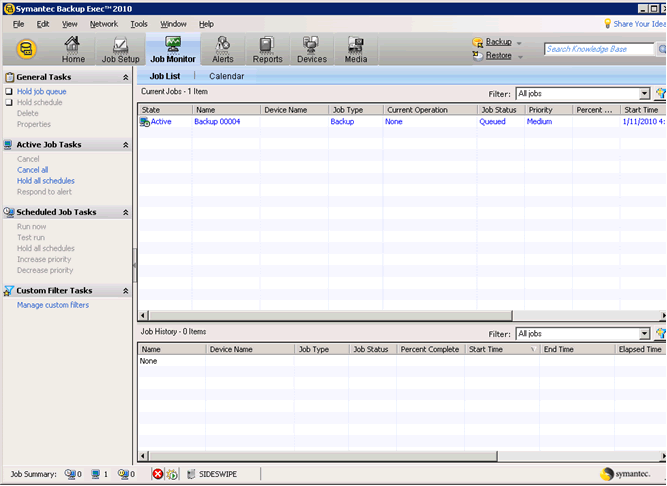Backup Exec 2010 Install Has Detected Remote Administrator

Hi All, I had a few problems with this, even after a support call, so I thought I would publish a detailed 'click-here', 'click-there' how-to article. First, this should work for at least versions 11d and 12 since I did this on version 12 and compared it to a version 11d installation. I cannot verify that it will work for any other versions.
This should also work for DB2 by substituting the DB2 component where I mention an Oracle component since they appear to configure the exact same way, but again, I could not verify this with certainty since I do not have a DB2 database. Unix Kernel. Start the “Backup Exec Remote Agent Utility” from the “Backup Exec for Windows Servers” start menu group or if the shortcut is missing, from “c: Program Files Symantec Backup Exec vxmon.exe”. On the “Status” tab, check the “Start the Remote Agent Utility every time you log on” check box. On the “Publishing” tab, check the “Enable the Remote Agent to publish information to the media servers in the list” check box.
Ranging from Backup Exec Services will not start to remote agent failed. Five common Backup Exec errors and how to. Backup Exec agent install failed with. Kenmore Direct Drive Vacuum Manual. Mar 20, 2014 How to install and configure Symantec backup exec 2010. It is must to install the ‘Backup Exec Remote. That has administrator.
Click “add” and add the media server IP address or server name. Assuming that your main Backup Exec application is on that server, I recommend using the local host IP address (127.0.0.1) for ease since you would never have to change it if you later change the server name or IP address. NOTE: The definition of Symantec term “media server” is the server where the main Backup Exec services reside. On the “Oracle” tab, click new, and select the “instance” you wish to backup. The user name here should be the Oracle “SYS” user and the proper password.
Enter the media server IP address or server name. Again, I recommend using the local host IP address, 127.0.0.1. This user will correspond to the user we will create later during step 7 in the main program in “Network>Logon Accounts”. On the “Database Access” tab, check the “Enable media server authentication for Oracle and DB2 operations” check box. Enter the user as Domain Administrator and click the “Change password” button and set the proper password for the Domain Administrator account.
This user will correspond to the user we will create later during step 8 in the main program in “Tools>Options>Oracle>Modify List”. Check the “Use the full computer name or IP address for Oracle and DB2 operations” check box. Enter the “Name or IP address” of the Oracle Server. Again, since our Oracle was on that server, I used the local host IP address, 127.0.0.1. NOTE: The documentation states that whatever you filled in here to backup, you must use the same exact value to restore. If you use the server name to back up, you will need to use the server name to restore, etc.
Go to the main Backup Exec for Windows Servers program. Go to the menu item “Network>Logon Accounts” and click “New”. Add the Oracle user “SYS” with the proper password and hit “OK”.
This needs to match the user you created in Step 5 on the “Oracle” tab. If it does not exist, also add the Domain Administrator user also and set it as default by clicking the “Set as default” button to the right.
Add this user even if “System Logon Account” already exists since they need to match the format exactly with the user you entered in the “Database Access” tab of the “Backup Exec Remote Agent Utility” per the Symantec/VERITAS support article 292442. Go to the menu item “Tools>Options>Oracle>Modify List” and click “New”. Add the IP address of the Oracle Server and pick the Domain Administrator account from the “Logon Account” drop-down box and hit “OK”. This needs to match the user you created in Step 6 on the “Database access” tab. Again, I used the local host IP address, 127.0.0.1, since our Oracle database is on the same server as the Backup Exec. All the information you entered here should correspond to the information you entered in the “Database Access” tab.